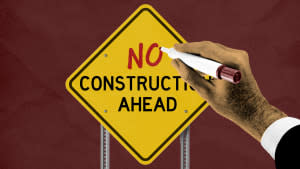Bad zoning rules are supercharging America's affordable housing crisis

Cities across the country are struggling with skyrocketing home prices. As I have previously written, the problem is rooted in the collapse of home construction after the Great Recession — for over a decade, there were not nearly enough homes built to accommodate the growing population, and now many cities are suffering a dire housing shortage. What's worse, city governments are exacerbating the problem by catering policy to existing wealthy property owners.
For example, the Philadelphia city council recently voted unanimously to make its housing shortage worse by downzoning several neighborhoods along Girard Avenue. Some background: Girard Avenue is a key transit corridor in Philadelphia, connecting northern West Philadelphia to the neighborhoods north of Center City. It's also one of the few trolley lines that still has dedicated lanes along some of its route, though cars still often drive in them.
It is lunacy to be downzoning an area like this. Philly has finally started to grow again over the last decade or so, after six decades of shrinking, which has breathed new life into the city culture and economy. As Ryan Briggs reports at WHYY, the downzoning happened because existing local residents want to prevent the area from being redeveloped. "Too much density along the corridors impacts quality of life for the adjacent neighborhoods that are full of single-family homes and long-term residents with traffic and trash," a spokesperson for the council president told Briggs.
When cities grow, it necessarily means change. The downzoned region is not some beautiful historic monument — on the contrary, it has been rebuilt several times in previous decades and now contains several tacky strip malls and drive-through fast food restaurants. What Philly as a whole badly needs (like just about all American cities) is more housing with easy access to public transit. As for congestion, that can be solved with street upgrades to divorce trolleys and buses from car traffic, to keep transit speeds high so people don't need to drive and the roads can breathe.
It is critical to keep the supply of new housing — whether that is private development or social housing, owned by the city — running well ahead of population gain. Without that, new residents will tend to displace existing poorer residents. Raising new barriers to construction will only accelerate housing price increases and gentrification.
You may also like
Men are rapidly losing their close friends, poll finds
Anti-woke zealots are trying to politically purge the military
Democrats fear Mitch McConnell is stoking infrastructure 'infighting'
